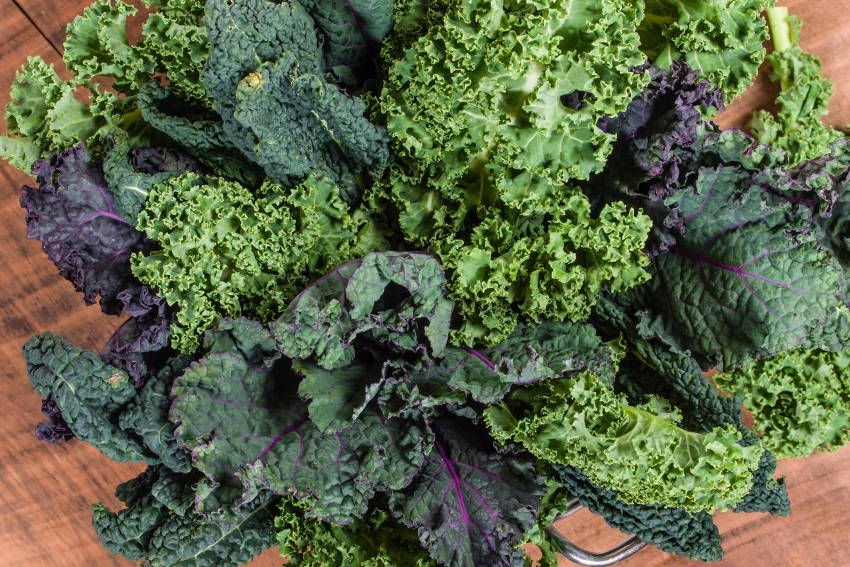Kale occupies a complicated place in the veggie hall of fame. Hyped by many online as the ultimate superfood, it also sometimes has a negative reputation for being coarse, strongly flavoured, and a food that's eaten more for its health benefits than for pleasure.
The truth, of course, is somewhere in the middle. There's no doubt that kale offers excellent nutritional value, even if it's not a miracle cure-all. Likewise, while older, tougher kale leaves can sometimes be fairly unpalatable, prime specimens are as tasty and tender as any brassica.
And when you grow your own, you can experience the health benefits of kale in a truly delicious form, and all for very little effort. Here's what you need to know.
Kale Description
Kale is perhaps best known as a bushy plant with large, dark green, tightly curled leaves. The plants grow up to 75cm high, although dwarfing varieties are available.
However, there are more options than the familiar dark green foliage. Russian red kale, as the name implies, has red-tinged foliage, scarlet kale takes the redness towards purple, while Tuscan kale has leaves which are a deep, purplish black.
Some varieties have leaves so strongly frizzled they resemble overgrown curly parsley, while others are more gently ruffled, or even almost entirely flat.
But no matter which variety, all kales are members of the genus Brassica, closely related to cabbages, Brussels sprouts, broccoli, and so on. Kale is thought to be one of the earliest brassicas to be widely cultivated, and was a staple food in the Middle Ages Mediterranean area thanks to its fast bulky growth and high nutritional value.
Potential Health Benefits
In recent years, kale has been widely promoted as one of the best superfoods of all. It's said to have remarkable anti-inflammatory and antioxidant properties, both of which are linked to improved heart health.
There's no denying that kale is an extremely nutritious food. As one of the darkest leafy greens, it features generous levels of vitamins A, C, and K, along with plenty of iron, potassium, calcium, and folic acid. It's high in fibre and bulky enough to satisfy appetites, but also low in calories, making it a great choice for weight control.
Kale in the Kitchen
As with many brassicas, kale can divide opinion at the table. If your only culinary experience is of older, tougher leaves with their distinctive metallic bitterness, you might have decided that kale was best left to its health food advocates.
However, younger leaves offer a very different experience. The most tender leaves can add a raw peppery zing to salads and stir fries, while slightly older ones can be treated much like spinach, and sauteed, steamed, or boiled as an appetising side.
Larger leaves can be shredded and used to bulk out slow-cooked stews or soups, or to add a depth of flavour to risotto. And of course, raw kale makes an indispensable part of that health food favourite, the smoothie.
Kale as Microgreens and Sprouts
An excellent way of enjoying the flavour and nutritional benefits of kale is to grow it as a microgreen or sprout. For this, barely germinated seeds are harvested when very young, either as leafless shoots or a little further down the line as tiny plants. Eaten raw or added to fast-cooked dishes, they bring a powerful burst of flavour along with the vitamins and minerals of older kale.
When to Grow Kale
Kale is classed as a winter vegetable, and definitely prefers cooler weather. Although it can be grown all year round in temperate areas, it's best to time your sowings so that maturity avoids the heat of summer. Indeed, harvests in winter will usually be sweeter, especially after a frosty night or two.
Sowings in early summer can get a head start of warm growth then settle in to maturity as autumn arrives, surviving deep into winter in all but the harshest weather. Alternatively, sowings in late winter or early spring can provide useful harvest of young leaves before high summer arrives, when the plant will tend to go to seed very easily.
How to Grow Kale
Kale should be grown in a sunny position, except in tropical or subtropical areas where part shade will give protection from scorching. It does best in slightly alkaline soil of 5.5-6.5 pH, but it's very forgiving within ordinary veggie-growing conditions. However, good drainage is important. Add plenty of compost before planting, both to improve drainage and provide nutrition, and if your soil is particularly heavy, add some sand or grit too.
Sow the seeds directly into damp soil, spacing groups of two or three seeds 15cm apart for baby leaves or 50cm for mature plants. Germination can take anywhere from three days to two weeks, depending on conditions, after which thin out the clumps to leave only the strongest seedling in each.
Kale's winter preference means it's a good choice for starting off under cover, then transplanting the seedlings to fill space left by earlier crops. Sow the seeds into plugs or small containers about a month before they'll go outdoors, and plant out when at least 4-6cm tall after hardening off.
Once established, kale needs little attention apart from regular watering, weed suppression, and optionally a monthly feed with a nitrogen-rich fertiliser. Adding a mulch will help with water retention and weeds, and will also help keep the shallow roots cool in warmer weather.
Harvesting Kale
Baby leaves can be picked when only a few centimetres long, and if you're careful to not take too many from each plant, kale can be treated as a 'cut and come again' crop.
Larger harvests will usually be possible from two to four months after sowing. Pick a few of the lower leaves from each plant, avoiding damage to the central rosette, and the plant will continue to produce new leaves for several months. In the right conditions, kale can stay productive right through until the next batch of sowings, potentially giving harvests all year round.
However, once you see flowers or seedheads starting to form, pick all the remaining leaves before they turn bitter and inedible.
Once cut, larger leaves will store successfully for several days when kept refrigerated in an airtight container.
Common Kale Problems
Kale is a robust crop that will largely look after itself, especially once it's established. However, there are a few potential problems to be aware of.
- As a particularly leafy member of the brassica family, kale can be vulnerable to cabbage white butterflies. Be on the lookout for caterpillars and remove them manually on sight.
- Companion planting alongside marigolds, nasturtiums, and coriander can help deter moths and other pests.
- Slugs and snails can be a threat in damp conditions. Take your usual precautions like beer traps, night patrols and organic pellets.
- Kale grown in areas with a large pigeon population may benefit from netting, which will also help keep cabbage white butterflies away.
- Aphids and whitefly can appear on younger crops, but are rarely a problem on more mature plants. Spraying with a mixture of water and horticultural soap is a simple organic solution.
- As with all brassicas, crop rotation is a good idea to prevent the buildup of club root.
Kale sometimes has a reputation as a veggie that's worth more for health than the palate. But if grow your own, and you'll see that it deserves more than the slightly worthy image it so often attracts.
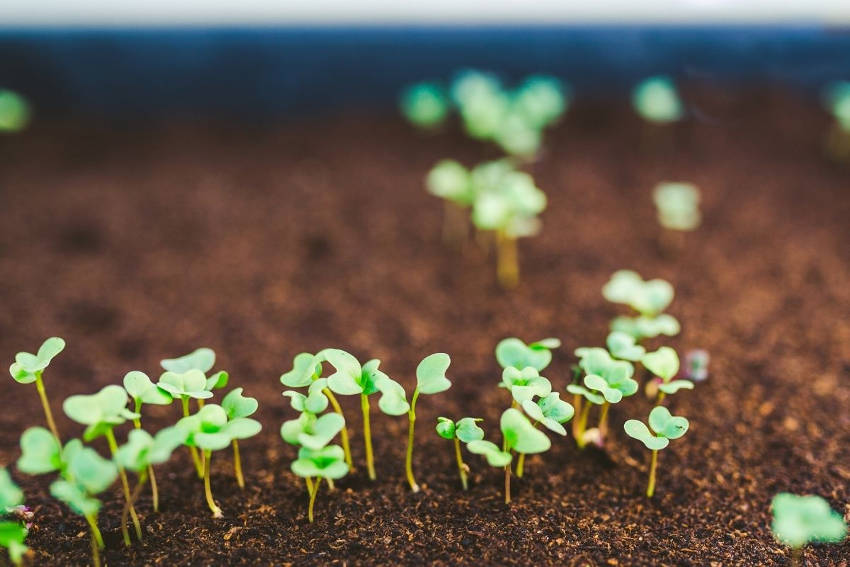
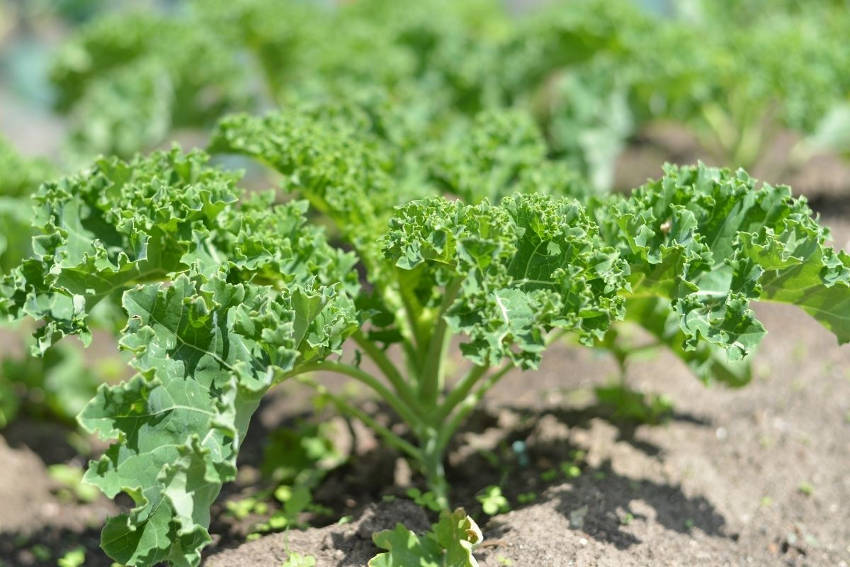
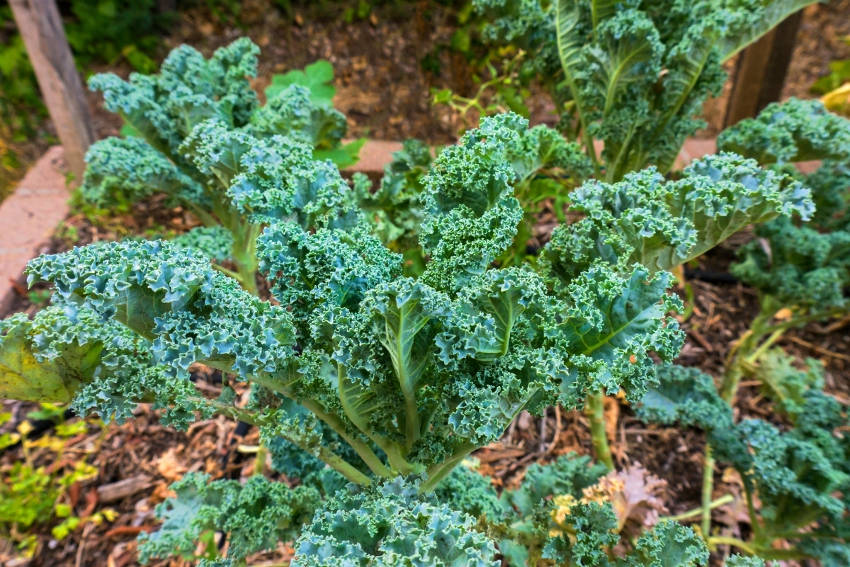
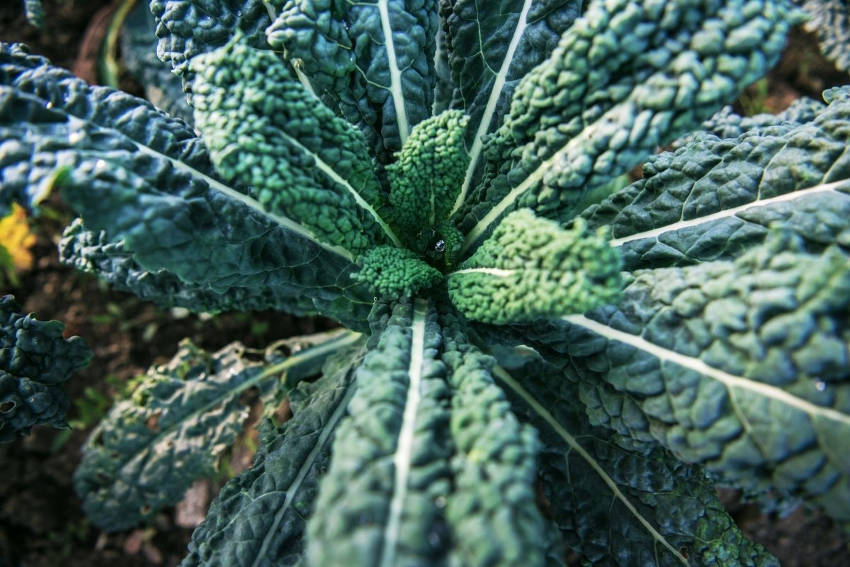
_850.jpg)
